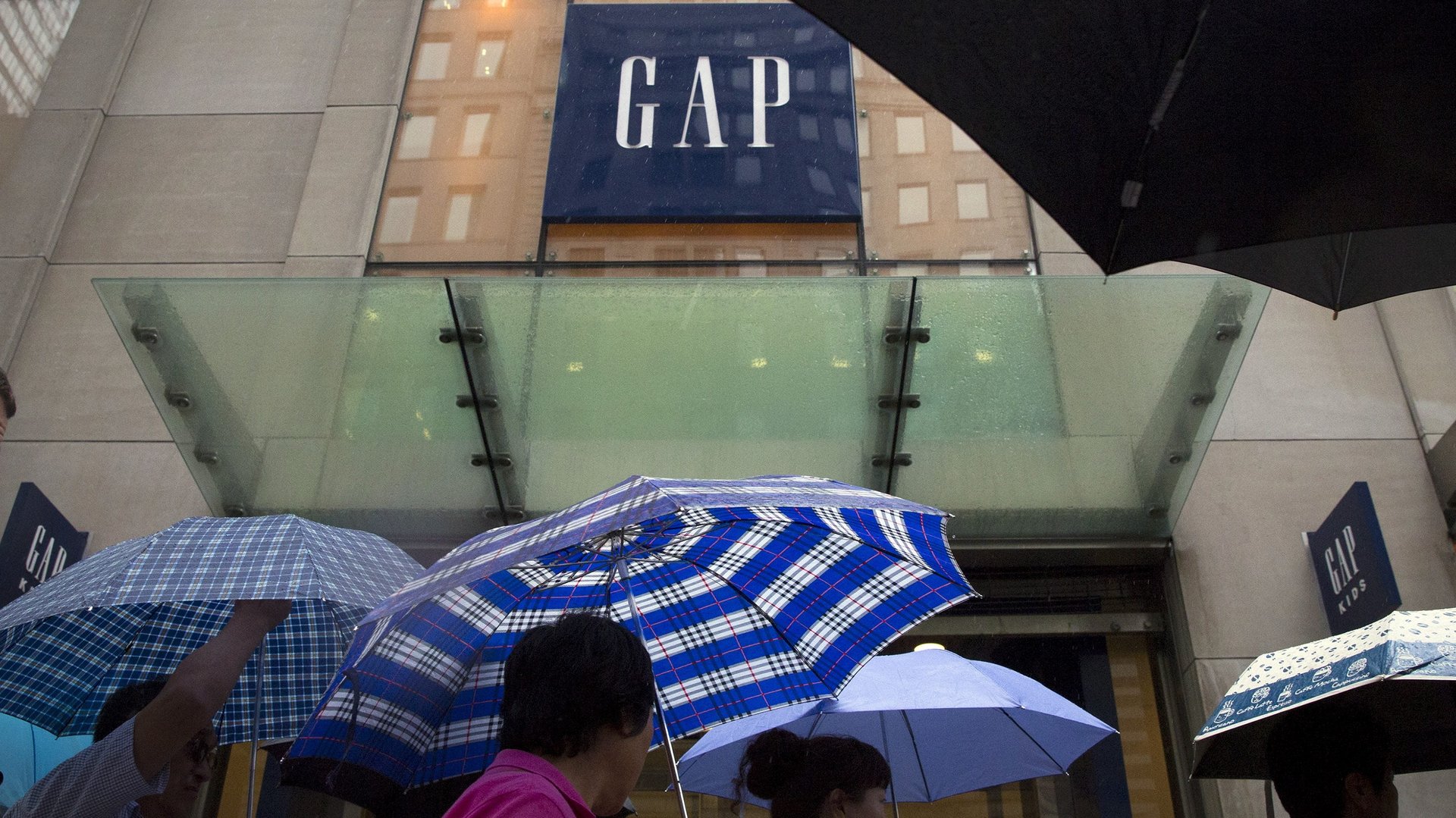Gap is blaming the weather for poor sales of its boring clothes
Just when Gap Inc. thought clear skies were ahead, a storm cloud appeared.


Just when Gap Inc. thought clear skies were ahead, a storm cloud appeared.
In the first quarter of 2019, sales at stores open at least a year shrank (pdf) at each of the company’s three main brands—Old Navy, Gap, and Banana Republic. The company hasn’t delivered great results in the past few years, but this quarter marked a bigger tumble than usual. The positive momentum Banana Republic built up in 2018 ground to a halt. Old Navy—typically the company’s one reliable bright spot—looked weak. But maybe most notable was the dismal performance at Gap’s namesake label, where same-store sales fell their most in about four years.
On a call with investors, Gap Inc. CEO Art Peck acknowledged the company’s disappointment, and pointed to a variety of causes for the weakness across the brands, though one got particular blame. Peck and Teri List-Stoll, Gap Inc.’s executive vice president and CFO, mentioned the weather more than 20 times combined on the call, repeatedly calling out how cold, wet, and unseasonable it was. “As you know, this is one of the coldest, wettest quarters in memory,” Peck said.
The weather indeed was bad across much of the US, and weather can affect clothing sales. But the trouble for Gap goes deeper than one dreary quarter of cold and rain.
Neil Saunders, managing director of GlobalData Retail, framed the situation succinctly in an interview with Reuters. “Every quarter management claims that products are improving and that the [Gap brand] is responding to changing consumer demand,” said Neil Saunders, managing director of GlobalData Retail. “And yet every season, Gap churns out the same bland range of undifferentiated product which has barely changed over the past 20 years.”
The moment should be ripe for Gap. Much of fashion is riding on a wave of 1990s nostalgia, and Gap’s original core category, denim, is bouncing back after years of pressure from athleisure. Levi’s, for one, has been able to recapture its edge.
But Gap has lacked a clear identity for years at this point. It isn’t quite clear if it’s a basics brand or a denim brand, it doesn’t have the compelling story of new competitors such as Everlane, and it can’t compete on price or design against the fast-fashion behemoths.
On its call, the company did admit that its products just didn’t connect with customers, especially at Old Navy. Its major plan for the Gap brand right now appears to be closing stores to get the brand back to profitability. It’s a necessary move, but it’s not the only step needed.
Meanwhile, the company’s active brand Athleta continues to do well. Growth continued to outpace the market, Peck said, “despite the unseasonable weather.”